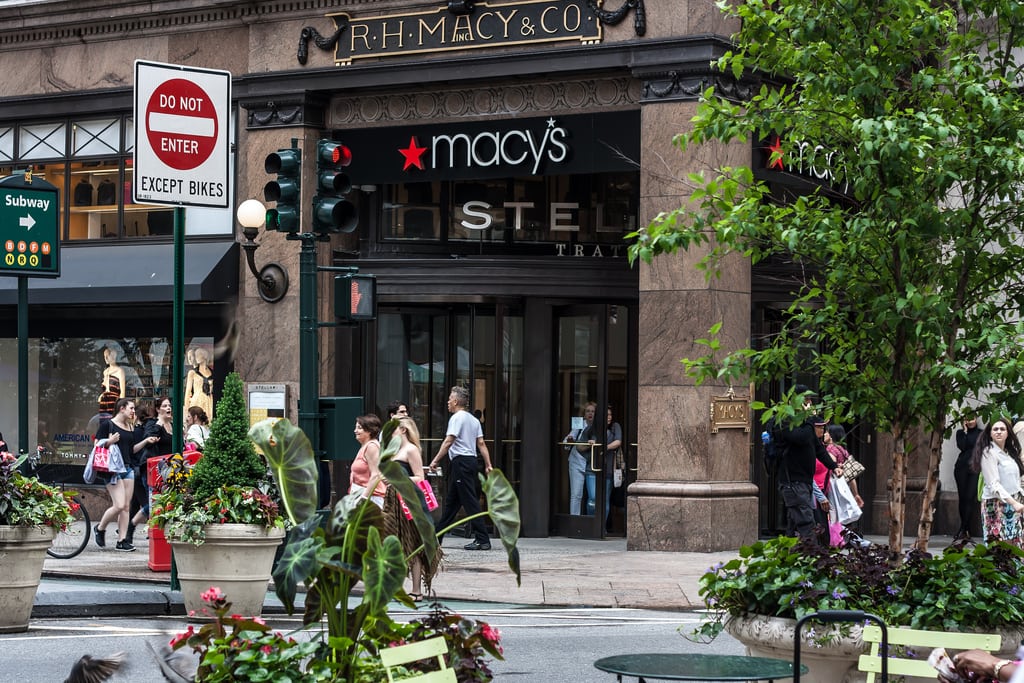Skift Take
While each visitor market is unique, many international travelers in the U.S. last year probably weren't shopping until they dropped because of a stronger U.S. dollar.
Many international travelers who visited the United States were probably feeling sticker shock during their trips as new data show spending was down more than 3 percent last year, the second straight year of a spending slump.
[Update: International arrivals to the U.S. were also down 3.6 percent through August 2017, the most recent month for which data is available, which contributed to the spending decline.]
The U.S. Department of Commerce reported that international visitors spent $149 billion in the U.S. last year, down from $154 billion in 2016, and that international visitor spending dropped 5.8 percent from 2015 to 2017. Data show spend was down from January to October but began to rise in November and December ($12.4 and $12.5 billion, respectively). But spending was down year-over-year for each month of 2017.
The numbers considered travelers’ spending on food, lodging, souvenirs, entertainment, and transportation during their trips. The spending drops in 2016 and 2017 marked the first time since 2002 and 2003 that international visitor spending in the U.S. fell for two consecutive years, according to the U.S. Travel Association.
The U.S. wasn’t as affordable last year as it has been in recent years for top visitor markets in Europe, Brazil, and Japan as the U.S. dollar continues to improve.
The U.S. Travel Association, in a statement, said that the international visitor spending slump is a stark contrast to 2010 to 2015 when such spending grew by 48 percent —more than twice as fast as the 21 percent increase in other exports of U.S. goods and services.
“Simply put, sustained declines in international visitor spending mean fewer U.S. jobs and less revenue for public services throughout states and local economies, said
Patricia Rojas-Ungár, U.S. Travel’s vice president for public affairs. “International travel is our country’s No. 1 service export, and 15.3 million American workers depend on a healthy travel industry for their employment.”
U.S. Travel and other travel industry organizations launched the Visit U.S. Coalition last month that it hopes will help the travel industry advance its agenda with a White House that’s called for travel bans and immigration policy overhauls.
The coalition, in a statement, said two-year spending decline is in-line with the country’s loss in long-haul market share during the same period. U.S. long-haul market share decreased more than 12 percent between 2015 and 2017 when the U.S. long-haul market share was 13.6 percent and 11.9 percent, respectively.
Meanwhile, Europe’s tourism had a major resurgence last year and is outshining the U.S. on many measures. “Around the globe, more people are traveling than ever before, and we cannot allow the U.S. to fall behind other nations in attracting international travelers,” said Amos Snead, a spokesperson for the coalition, in a statement. “President Trump has made it a priority to shrink our trade deficit and growing inbound travel can play a big part in achieving that success.”
Higher hotel rates, for instance, are often a big reason why many destinations post record high visitor spending totals, and destinations like Los Angeles and Miami have announced record international visitor spending for 2017. It’s unclear if higher hotel rates are causing many travelers to spend less in other areas, but unfavorable exchange rates for many visitor markets is also a likely reason for the overall drop.
Kristin Kilburn, retail services director for Ala Moana Center in Honolulu, Hawaii, Hawaii’s largest shopping center, echoed the reality that high hotel rates typically help destinations achieve record visitor spending. But Killburn said the shopping center still saw strong spending from international visitors last year, as Hawaii’s tourism board announced last week that international visitors to the state spent a record $16.7 billion in 2017.
Organization’s such as U.S. Travel have been saying that the U.S. has been losing its market share in global international arrivals for the past three years, and it’s becoming more apparent that American destinations are losing out on billions of dollars in the process.
The Daily Newsletter
Our daily coverage of the global travel industry. Written by editors and analysts from across Skift’s brands.
Have a confidential tip for Skift? Get in touch
Tags: spending, tourism, us travel
Photo credit: International travelers spent less in the U.S. in 2017 than they did in 2016, the second straight year of spending declines. Pictured are travelers outside Macy's Herald Square in New York City. drpavloff / Flickr
